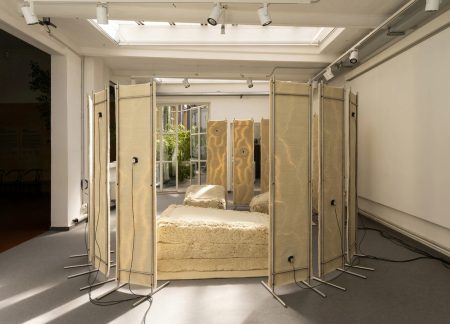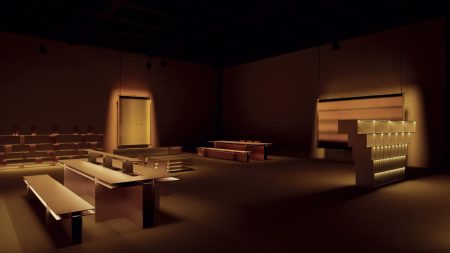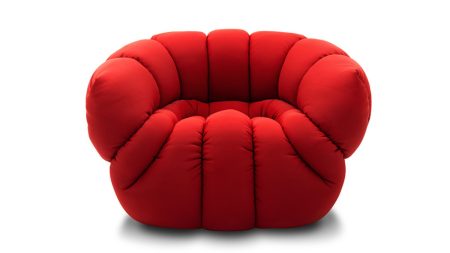The journey of a designer’s first creation is much like the first cry of a newborn baby—both are raw, honest, and filled with the uncertainty of transition. Just as an infant’s first wail signals the beginning of a life shaped by hunger and growth, a designer’s debut project often reveals the unfiltered essence of their artistic identity. It is a moment marked by courage, clarity, and the beginning of a lifelong dialogue with materials, spaces, and emotions. For Johan Karrebæk Thun, a young Danish designer, this moment of raw artistic expression came in the form of Tension Connection, a groundbreaking interior design concept that captures his deep appreciation for the natural world and his innovative approach to woodworking. This debut piece is not just a functional object; it is a testament to Thun’s ability to decipher the emotional and tangible essence of wood, a material that has shaped human culture for millennia.
Growing up just outside Copenhagen, near a sprawling forest park, Thun developed a profound appreciation for the interplay between nature and the built environment. His childhood surroundings—a blend of the organic beauty of the forest and the structured order of human-made spaces—instilled in him a sensitivity to the physical world that would later define his work. “I became more aware of my physical surroundings,” he reflects, “which naturally led me into the world of design.” This awareness was not limited to the visual; it extended to the tactile and emotional qualities of materials, spaces, and the way people interact with them. For Thun, design became a way to bridge the gap between the small-scale details of craftsmanship and the broader social, industrial, and geographical contexts that shape our lives. His journey into design was not just a professional path but a deeply personal one, rooted in his connection to the natural world.
Thun’s fascination with wood as a material took a pivotal turn during his time at the Design Academy Eindhoven, where he delved into the world of contemporary wood design and architecture. It was during this period that he stumbled upon an inspiration that would change the course of his work: the ancient Stave Churches of Norway. These structures, some dating back as far as 825 years, are marvels of traditional woodworking, constructed without the use of screws or glue. The simplicity and ingenuity of these churches sparked Thun’s curiosity about traditional joinery, leading him to explore Japanese wood joints, which achieve strength and precision solely through interlocking forms. These historical and cultural references became the foundation for Tension Connection, a project that blends ancient techniques with modern technology to create something entirely new.
At its core, Tension Connection is a minimalist interior piece that challenges conventional woodworking practices by utilizing wood as a mono-material. The design is centered around a series of innovative joints, crafted using a combination of ancient woodworking techniques and modern CNC (Computer Numerical Control) routing technology. These joints, inspired by both Norwegian stave construction and Japanese joinery, rely solely on the tension and gravity of interlocking wood elements to create a structurally sound system. The result is a piece that feels both fragile and energetic, its light, honest aesthetic balanced by the dynamic presence of the wood. As Thun describes it, “Every element interacts, relying solely on tension and gravity as structural forces.” This interplay between negative and positive spaces—created by drilling precise gaps in the wood and inserting round sticks—gives the piece its unique visual language and functionality.
One of the most captivating aspects of Tension Connection is its modularity and practicality. Unlike many contemporary design pieces, Thun’s creation is not just a static object; it is a system that can be easily assembled, disassembled, and transported. The absence of fasteners and adhesives means that the entire structure can be built and taken apart with nothing more than bare hands. This simplicity makes it highly adaptable, allowing users to create bespoke compositions of varying scales and configurations. Whether used as a shelf, a room divider, or a stands-alone sculpture, Tension Connection is a piece that invites interaction and creativity. Its pared-back visual identity ensures that it can seamlessly integrate into a variety of spaces, from minimalist interiors to more eclectic environments, where it becomes a canvas for the objects and memories of those who use it.
For Thun, Tension Connection is more than just a design—it is a love letter to the materiality of wood and the natural world that inspires him. Wood, as a material, is often celebrated for its versatility, but Thun is particularly drawn to its emotional resonance. “When you put the stick into the beam, the gap in the beam opens up like a flower,” he says, describing the moment when the pieces come together. “Suddenly, the stringent squared wood profile transforms into a more organic shape. I find it beautiful that the material is expressing its natural properties in the connection points.” This moment of transformation is not just a technical achievement; it is a poetic expression of wood’s inherent flexibility and energy. By embracing mono-materiality and simplification, Thun believes that we can foster a deeper connection between ourselves and the natural world. In an era where so much of our lives is mediated by technology, Tension Connection invites us to slow down, appreciate the beauty of raw materials, and reconnect with the physical world around us.
As a young designer, Thun is just beginning to explore the possibilities of his craft, but Tension Connection already hints at the profound potential of his work. Identifying himself as a generalist rather than a specialist, Thun is eager to continue experimenting with materials, objects, and installations that challenge conventional norms. His debut project is not just a statement of his artistic identity; it is a preview of the thoughtful, innovative, and deeply human work that is yet to come. Through Tension Connection, Thun reminds us that design is not just about creating objects; it is about fostering meaningful dialogues between people, materials, and spaces. As we interact with his work, we are invited to see the world anew, to appreciate the beauty of tension and connection, and to reconnect with the natural world that inspires us all.









